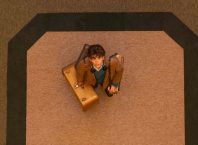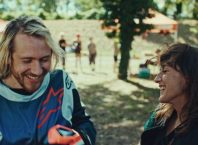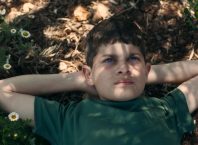Maleficent has always been the object of my fascination in this story, as much for the art design in Disney’s animated Sleeping Beauty (1959) as for her wicked, wicked ways. That angular horned creature with the sweeping black cape has a hold on the imagination. I read the story of Sleeping Beauty to my cousin when she was about three or four, from a book illustrated with images from the film. She was mesmerized, and for a while, whenever she saw me, she’d say: “I want to hear the story about the bad witch.”
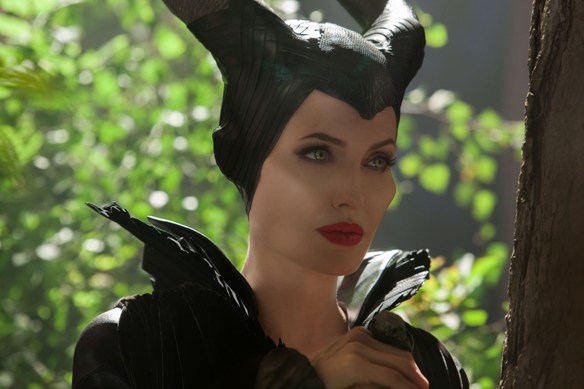
Now, Maleficent finally has a film of her own. Angelina Jolie plays the enigmatic presence, and she is magnificent. The directing debut of special effects artist Robert Stromberg, known for his work on a whole slew of films including Pan’s Labyrinth (2006) and The Hunger Games (2012), Maleficient is a re-telling of the story, based on the Disney film, with the focus on the one who really moves the action. The film depicts two kingdoms, that of humans with their greed and need to rule and be ruled over, and that of faerie, the wild moors where all manner of creatures live in harmony. Just as there are two kingdoms, I am of two minds about this film.
My five year old self would have been instantly enamored of this film, as would my eight year old self. From the first glimpse of the bewitching winged fairy with her curving horns, one is immersed in a world of fantasy, a world I would still gladly live in forever. However, now that my years have long moved past the 5 X 8 mark, while there is still a voice within me that is jumping up and down in delight, calling out in glee “Oh! Look at the fairies!” – there is room to consider this film from a more critical vantage point.
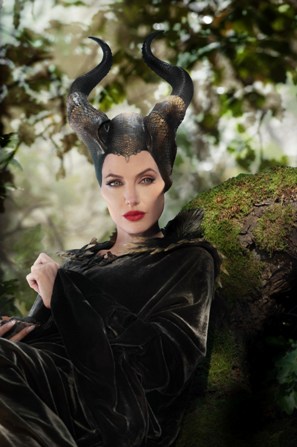
The strength of Disney’s Sleeping Beauty, other than Tchaikovsky, whose ballet score provided ample scaffolding for a magical soundtrack, is in the art. The look of this animated film, largely due to the vision of Eyvind Earle, is inspired by the art and manuscripts of the medieval era in which the story takes place. Wisely relying on the image of Maleficent, this film has not only translated that image into the costume and makeup of the live action version, but took those bold black lines back into a softer, brown woodland mix of sweetness and playful mischief to create a youthful Maleficent, enchantingly realized by Isobelle Molloy. This is where the resemblance ends.
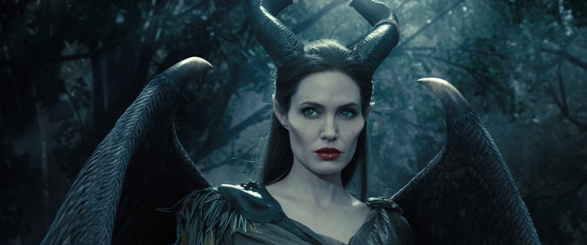
There is an abundance of creativity in envisioning the magical realm of the moors and its creatures, one might even venture to say an overabundance. Unlike its animated ancestor, there is no sense of a coherent artistic vision in Maleficent, each creature seems to emerge from a different hand and eye, and the sum of all these many parts does not add up to create a world. I wanted to immerse myself, but each time another fairy or woodland being appeared, it seemed to come from a different style and genre, calling attention to the artifice and breaking the spell.
Now, as for the story… Sleeping Beauty is a fairy tale, a fairly simple story based on certain conventions: the power of magic, the assumption that the beautiful is good, evil is ugly, people are either one or the other, love happens in an instant, lasts forever, and true love conquers all. Maleficent responds to the desire to overturn these assumptions and acknowledges a youthful audience that has seen and knows far more of the ways of the world than I did at age five, or eight. This film reflects the conventions of our time, the lines between good and evil are not so decisively drawn and we like our characters a bit more complex. All too often though, enthusiastically determined to overturn clichéd and outdated assumptions, we are exchanging one pattern for another. If in the past, one expected a princess to be beautiful, perhaps also kind, threatened more often than not by an older, uglier, evil and powerful female figure (Snow White’s stepmother, Cinderella’s stepmother), the tables have turned and as Annie Lennox sings: Sisters are doing it for themselves. Unfortunately for Maleficient, it has come close on the heels of Frozen, and the comparison leaves the former looking a bit weak. To the extent that I find fault with the narrative, it is uncannily similar to my disappointment in the art: it feels like a few different stories stuck together with duct tape.
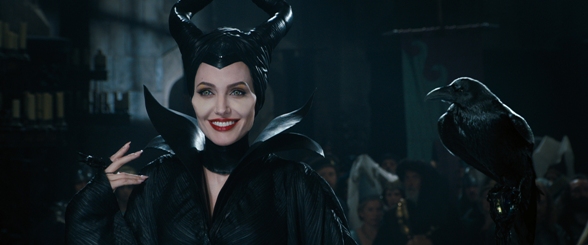
Yet, Maleficient does wield a certain power over the viewer, as Angelina Jolie takes this role and really makes it her own. Sam Riley rocks as her somewhat reluctant henchman Diaval, while Sharlto Copely, he of District 9 and Elysium, has disappointed me mightily. Within the tangle of plot and style, there are not only some striking scenes of tantalizing evil proportions, but also – and perhaps some of the lovelier aspects of the film, time taken to show a love that grows slowly, inexorably, perhaps even against one’s first impressions, a love that is not blind at all, but looks attentively at what is there.
Maleficient (USA, 97 min, English, 2014)
Directed by Robert Stromberg; Screenplay: Linda Woolverton; Based on: La Belle au bois dormant – Charles Perrault; Little Briar Rose – Jacob and Wilhelm Grimm; Sleeping Beauty (1959) – Erdman Penner – story adaptation, writing – Joe Rinaldi, Winston Hibler, Bill Peet, Ted Sears, Ralph Wright, Milt Banta; Cast: Angela Jolie, Elle Fanning, Sharlto Copely, Sam Riley, Brenton Thwaites, Isobelle Molloy.



